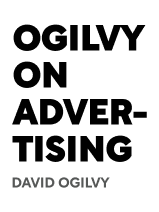

This article is an excerpt from the Shortform book guide to "Ogilvy On Advertising" by David Ogilvy. Shortform has the world's best summaries and analyses of books you should be reading.
Like this article? Sign up for a free trial here .
What is advertising copy? What do you need to know about writing ad copy?
Advertising copy is the body text of an ad. While only a small fraction of consumers read the copy, it’s important to have great copy to keep your readers’ attention and get them interested in the product.
Read more about writing and creating advertising copy below.
Advertising Copy
Advertising copy is the body text of an ad. On average, only 5% of consumers will read body copy. When it comes to businesses, around 10% of trade journal readers read the copy. These readers will be people who are interested in your product, or who you’ve successfully drawn in with your photo and headline.
Writing good ad copy is important. You can write copy and maintain your readers’ interest:
Tip #1: Use the second person singular. People don’t want to be addressed as if they were in a crowd—when they read, they’re alone.
Tip #2: Be interesting. Bored people won’t buy a product. Toilet humor is fine, but don’t make fun of religious figures (some people will find it funny, but others will be shocked).
Tip #3: Keep the writing simple. Use short paragraphs, short sentences, and everyday diction. This is especially important for mail-order advertising copy.
- For example, when Ogilvy was writing a soap ad, he first included the word “obsolete,” but few people in his target audience knew what it meant. He ultimately used “old-fashioned.”
Tip #4: Write a story, not an essay.
- For example, one Zippo ad told the story of a lighter that had been found in the belly of a fish and still worked.
Tip #5: *Be specific. Explain what the product does. Particularly when advertising to businesses, give stats such as percentages or cost savings.
Tip #6: Don’t use analogies. They confuse people.
- For example, if you try to compare your product to a Rembrandt because they’re both masterpieces, people will think you’re selling Rembrandts.
Tip #7: Don’t use superlatives. No one believes them.
- For example, if you claim your product is “the most popular in the country,” no one will be convinced.
Tip #8: *Use testimonials, ideally from consumers or experts. Readers remember ads with celebrity testimonials, but they remember the celebrity, not the product, and they’re usually suspicious that the celebrity has been paid to say nice things. Additionally, you can sometimes frame an entire ad around a testimonial.
- Consumer example: Ogilvy wrote an ad about how Austin cars had saved an anonymous diplomat so much money, he could afford to send his son to private school. (However, an editor eventually found out that the “anonymous diplomat” was Ogilvy, and he had to send his son to a different school.)
- Business example: Tugboat engineers were impressed by a testimonial from Bud Dacus because he was well-known in the industry and had been working on the Mississippi for 25 years.
Tip #9: Write about sales and special offers. Consumers remember these ads better.
Tip #10: Include prices. If you don’t, readers will be too shy to go to a store and ask, and they’ll never buy the product.
Tip #11: Sign the copy with the agency’s name. While many people oppose this, because a client is paying to advertise themselves, not their agency, Ogilvy has found that agencies make better ads when they’re forced to put their names on them.
Tip #12: *Use long copy (more than 350 words). Long advertising copy allows you to include extra facts and suggests that you have important things to say. Long advertising copy is especially valuable for business advertising (because there’s often a lot to talk about) or for expensive products. Make sure your first paragraph contains a hook.
- For example, Louis Engel wrote an almost 6,500-word ad for Merrill Lynch. It didn’t even include a coupon and it received 10,000 responses.
Writing ad copy takes practice but it’s worth working on to create great copy.

———End of Preview———
Like what you just read? Read the rest of the world's best book summary and analysis of David Ogilvy's "Ogilvy On Advertising" at Shortform .
Here's what you'll find in our full Ogilvy On Advertising summary :
- What the "father of advertising" has learned from his decades' of experience
- How to craft easy-to-understand ads that work
- The 6 pioneers of the advertising industry






